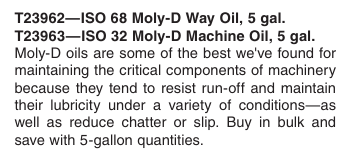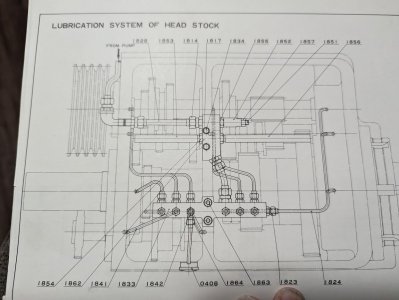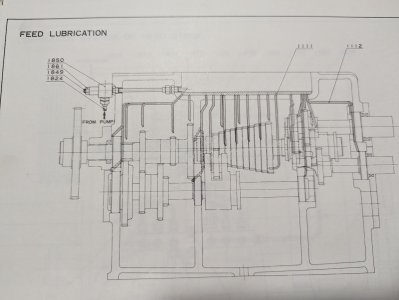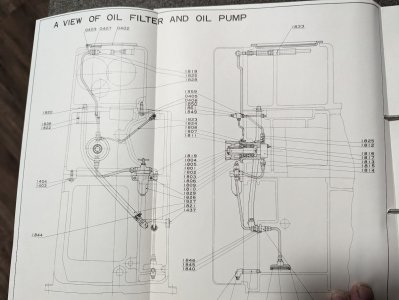I have a few thoughts about machines and gear box oil. My background is in power plants. I’ve worked on quite a few different gear boxes through the years and have also worked on lathes and other machine tools. I’m not an expert - just a long term user. I recommend sticking with the manufacturer’s recommendation on oil, but there are reasons to make deviations such as is your shop climate control, or do you have wide swings in temperature across the seasons. You may want to consider viscosity or even changing to a synthetic.
I currently have seven lathes in the shop, and this is how I divide them up when it comes to oils. I use the appropriate Mobil DTE R&O oil in a machine that runs an internal clutch, internal brake, and pressurized lubrication with or without a filter. These machines benefit from more frequent oil changes as opposed to using a more expensive synthetic oil, for example. The oil gets darker quicker. Additionally, synthetics can cause slipping in internal wet clutches and brakes.
If I were running a small 16” or under Asian lathe, I would initially pull the headstock cover, inspect for cleanliness or any debris. If any found, I would drain the oil. Then I would build a vacuum hose by taking a 1/2” clear plastic hose with an 1/8” bare welding rod down the middle of it (to hold it straight) and duct tape it to a shop vac hose leaving the nozzle partially open so as to not overheat the shop vac. I’d use this to vacuum out the remaining oil and debris from the bottom of the headstock. Next refill it with the appropriate weight AW-hydraulic oil. This stuff tends to clean a little better than the R&O type. Run that for about 10 hours, drain it, inspect and vacuum again if needed. Refill with the same oil and double the drain interval and inspect and repeat the vacuuming if needed.
After this I would drain it and switch to a Mobil or equivalent SHC synthetic oil of the appropriate weight. This oil will reduce friction and temperature which is good in a headstock. Many of these small lathes use undersized gears and bearings. This oil will help extend the life of these components and keep the headstock a little quieter longer. And because the headstock is now clean, the oil change intervals can be quite long.
For way oil I prefer Schaeffer molly lube 160 in ISO 68 and 100, depending on the machine. This oil has molybdenum as well as the original tackifiers that were often specified for manual machines. I’ve used this oil for at least 20 years or more. You can change to this oil and physically feel a difference in the reduction of friction in the machine versus with Mobil Vactra way oil. This oil is expensive but as someone who has rebuilt machines it is far cheaper than rebuilding.
I also use Mobil Vacuoline 1405 in the Moore jig bore, Moore rotary table and a surface grinder. This oil has some of the qualities of both hydraulic oil and circulation oil. Equipment of this type often has very close tolerances and this oil can reduce pump pressure to their precision surfaces. This oil has tackifiers and a little finer viscosity, so it flows a little quicker in these types of machines.




